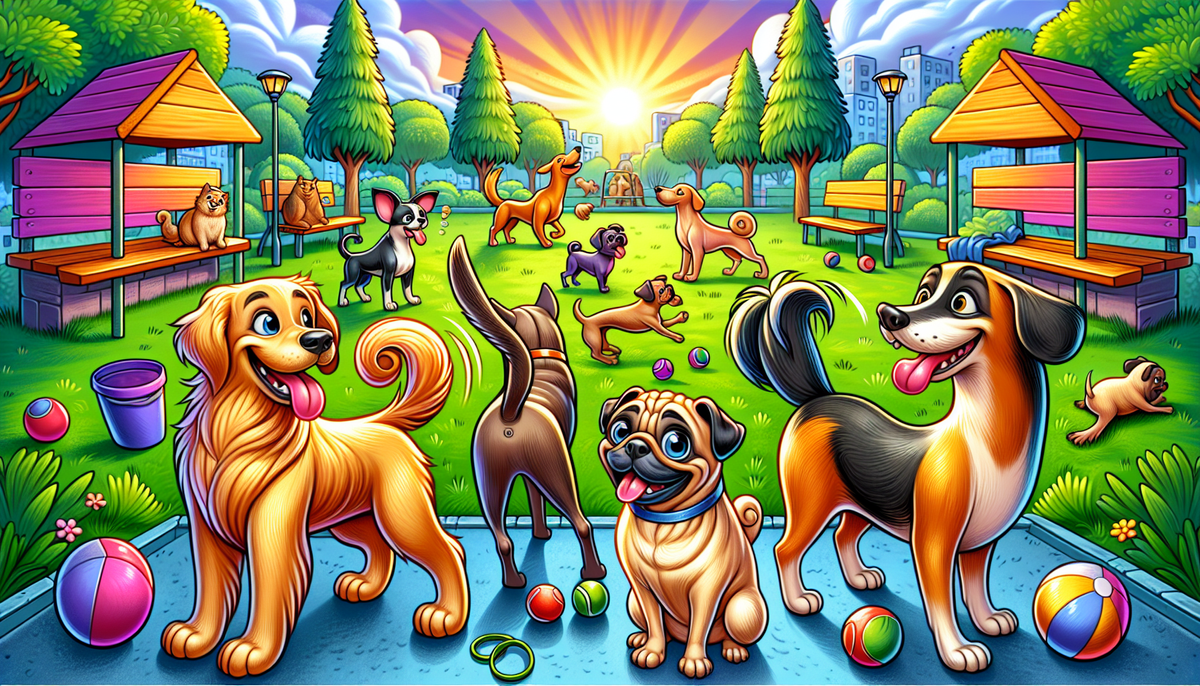The Secret World of Pets: What Does Your Dog's Tail Wag Really Mean?
Think you know what your dog’s wagging tail means? Think again! There's a secret code hidden in that wag—whether it's left or right, fast or slow, high or low, your pup’s tail is telling you way more than just "

The Secret World of Pets: What Does Your Dog’s Tail Wag Really Mean?
Okay, be real—ever caught your dog wagging their tail like they just won the lottery, but then suddenly they’re growling at the mailman? What gives? 🤔
Most of us think a wagging tail means our dog is happy, right? But here’s the thing: that’s not always the case. In fact, your dog’s tail is like their own secret language, and if you pay close attention, it’s telling you way more than just “I’m happy you’re home!” 🐕💬
Let’s dive into the mysterious world of dog tail wags and figure out what your furry BFF is really trying to say.
What Does a Tail Wag Actually Mean?
Dogs don’t have words like we do, so they rely on body language to communicate. And their tails? Well, they’re like emotional flags waving in the wind. But here’s where it gets tricky—just because that tail is moving doesn’t always mean your dog is throwing a mental party. 🎉
Think about how we use gestures. Sometimes a wave is a friendly “Hey, what’s up?” but other times it’s more like, “Please don’t talk to me, I’m just being polite.” Dogs are the same way with their tails—it’s all about context.
So, what’s your dog really saying when they wag their tail? Let’s break it down.
Tail Wagging Direction: Left or Right?
Here’s a fun fact that might blow your mind: the direction your dog wags their tail actually matters. 😲
- Right-Side Wag: If your dog’s tail is wagging more to the right, it’s usually a sign they’re feeling positive. Think of it like their version of a happy dance. 💃
- Left-Side Wag: But if that tail is leaning more to the left, your dog might be feeling anxious or unsure. It’s like their way of saying, “Hmm, I’m not so sure about this…”
It’s kind of like their own little doggie code, and once you know it, you’ll start noticing it everywhere.
Wag Speed: Fast or Slow?
The speed of your dog’s tail wag is another clue to what’s going on in their head. 🧠
- Fast Wag: A quick, rapid wag usually means your dog is feeling super excited or intense. It’s like when you see your best friend after a long time and you can’t help but jump up and down. 🐕💨
- Slow Wag: A slower, more deliberate wag? That’s your dog saying, “I’m not sure about this situation.” It’s like when you meet someone new and you’re still figuring out if they’re cool or not.
So, next time you see your dog wagging their tail, take a second to notice how fast it’s moving. It might give you a clue about how they’re feeling.
Tail Position: High or Low?
The position of your dog’s tail can also tell you a lot about their mood. It’s like their emotional thermometer. 🌡️
- High Tail: If your dog’s tail is up high and wagging, they’re probably feeling confident or excited. It’s like they’re saying, “I’m the boss here!” 🐕👑
- Low Tail: On the flip side, if their tail is low or tucked between their legs, they might be feeling scared or submissive. It’s their way of saying, “I’m not feeling so great right now…”
And if their tail is stiff while wagging? That could mean they’re feeling tense or even aggressive. It’s like when someone smiles but their eyes say, “I’m not actually happy.” 😬
Different Breeds, Different Tails
Not all dogs have the same kind of tail, and that can totally change how they communicate. 🐾
- Curly Tails (like Pugs): These tails don’t wag the same way as a long, straight tail, so you might have to look at other body language cues to figure out what your pug is feeling.
- Docked Tails (like Boxers): Some dogs have tails that are docked (cut short), which makes it harder to read their emotions. In these cases, you’ll want to pay extra attention to their ears, eyes, and overall body posture.
It’s kind of like how people speak different languages—dogs with different tails have their own unique ways of “talking.”
Why Should You Care About Tail Wags?
So, why does all this tail talk matter? Because understanding your dog’s body language can help you build a stronger bond with them. 💖
When you know what your dog’s tail is saying, you can respond to their needs better. Maybe they’re feeling anxious and need some space, or maybe they’re super excited and ready to play. Either way, being able to “read” their tail helps you be the best pet parent ever. 🏆
Real-Life Example:
Let’s say you’re at the dog park, and your dog is wagging their tail like crazy while playing with another dog. Everything seems fine, right? But then you notice their tail starts to stiffen and stand straight up. That’s your dog’s way of saying, “I’m feeling a little threatened here.” It might be time to step in and give them a break before things get tense.
Next Time You See a Wag…
So, is your dog’s tail “talking” to you in ways you haven’t noticed yet? Next time, take a closer look at the direction, speed, and position of that wag. You might just unlock a whole new level of communication with your furry friend. 🐕💬
And hey, did you know that some dog breeds, like Basenjis, can’t wag their tails much at all? So how do they show they’re happy? Stick around—we’ll get into that next time! 😉
Now you’re officially a dog tail detective! 🕵️♀️ Next time your dog wags their tail, you’ll know exactly what they’re trying to say. Pretty cool, right?



